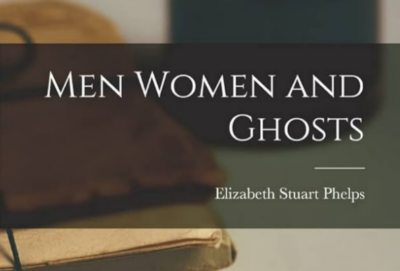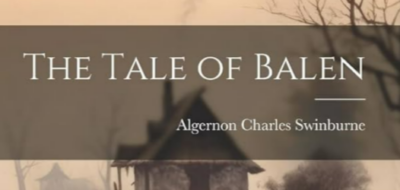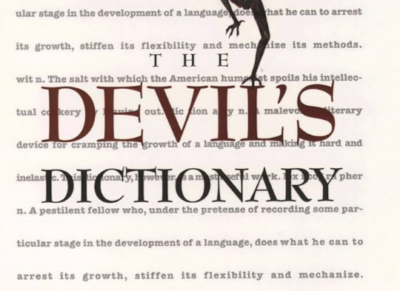54 Results in the "Non-Fiction" category
Biography & Memoir (434)
Books Like (8)
Business & Finance (26)
Children’s Fiction (203)
Dystopian (16)
Education & Learning (9)
Fantasy (1214)
fashion (1)
Fiction (4477)
Health & Wellness (21)
Historical Fiction (504)
Horror (159)
Literary Fiction (788)
Novel (229)
Others (106)
Philosophy (128)
Poetry (208)
Politics & History (131)
Posts (65)
Psychology (46)
Religion & Spirituality (1)
Romance Novel (535)
Science & Technology (82)
Science Fiction (220)
Self-Help & Personal Development (99)
Thriller / Mystery (858)
Travel & Adventure (2)
True Crime (55)
view (96)
Young Adult (284)
-
Chapter
The Cross-Roads
 In this chapter titled The Cross-Roads, the story opens with a silent fracture, one that grows steadily between Charlotta and her husband, Herr Altgelt. His devotion to music becomes an escape from the quiet turmoil within their home, each note pulled from his violin carving out more space between them. Charlotta, once content in his presence, now feels invisible—her feelings reduced to background noise as he retreats into the structure of his compositions. Her locket, once cherished, now tightens in her…
In this chapter titled The Cross-Roads, the story opens with a silent fracture, one that grows steadily between Charlotta and her husband, Herr Altgelt. His devotion to music becomes an escape from the quiet turmoil within their home, each note pulled from his violin carving out more space between them. Charlotta, once content in his presence, now feels invisible—her feelings reduced to background noise as he retreats into the structure of his compositions. Her locket, once cherished, now tightens in her…-
90.3 K • Ongoing
-
-
Chapter
Pickthorn Manor
 In this chapter titled Pickthorn Manor, a quiet intensity shapes the life of Lady Eunice, whose days unfold beneath the shadow of personal loss. Her fiancé, Lord Hartwell, was claimed by the war, and with him vanished the future she once envisioned. The manor stands still, cloaked in ivy and grief, where her only companions are the roses she tends with ritual precision. These gardens, pruned with unwavering care, offer her a sense of control against the upheaval that claimed her joy. Even the ticking of…
In this chapter titled Pickthorn Manor, a quiet intensity shapes the life of Lady Eunice, whose days unfold beneath the shadow of personal loss. Her fiancé, Lord Hartwell, was claimed by the war, and with him vanished the future she once envisioned. The manor stands still, cloaked in ivy and grief, where her only companions are the roses she tends with ritual precision. These gardens, pruned with unwavering care, offer her a sense of control against the upheaval that claimed her joy. Even the ticking of…-
90.3 K • Ongoing
-
-
Chapter
Preface
 Preface to this poetic collection extends far beyond a mere introduction—it offers a thoughtful exploration of how boundaries in poetry can be expanded and reshaped. The writer reflects on what constitutes a “story,” not confining it to traditional narratives but embracing formats like lyrical sequences, prose-poem hybrids, and even dramatic verse that draws on natural elements or abstract images. Rather than relying solely on character and plot, the pieces are composed to evoke atmosphere and…
Preface to this poetic collection extends far beyond a mere introduction—it offers a thoughtful exploration of how boundaries in poetry can be expanded and reshaped. The writer reflects on what constitutes a “story,” not confining it to traditional narratives but embracing formats like lyrical sequences, prose-poem hybrids, and even dramatic verse that draws on natural elements or abstract images. Rather than relying solely on character and plot, the pieces are composed to evoke atmosphere and…-
90.3 K • Ongoing
-
-
Story
Men, Women, and Ghosts
 Men, Women, and Ghosts by Elizabeth Stuart Phelps is a collection of short stories blending realism with supernatural elements, exploring the lives, emotions, and inner struggles of its characters. Published in 1869, the book delves into themes of love, loss, war, and the human psyche, often with a focus on the impact of the Civil War on individuals and families. Phelps’ stories are known for their psychological depth and moral complexity, as well as their daring exploration of women’s roles and inner lives. With a mix of ghostly encounters and poignant human experiences, *Men, Women, and Ghosts* is celebrated for its sensitive, sometimes haunting portrayal of the spiritual and emotional dimensions of everyday life.
Men, Women, and Ghosts by Elizabeth Stuart Phelps is a collection of short stories blending realism with supernatural elements, exploring the lives, emotions, and inner struggles of its characters. Published in 1869, the book delves into themes of love, loss, war, and the human psyche, often with a focus on the impact of the Civil War on individuals and families. Phelps’ stories are known for their psychological depth and moral complexity, as well as their daring exploration of women’s roles and inner lives. With a mix of ghostly encounters and poignant human experiences, *Men, Women, and Ghosts* is celebrated for its sensitive, sometimes haunting portrayal of the spiritual and emotional dimensions of everyday life.-
4.9 K • Nov 8, '24
-
4.6 K • Nov 8, '24
-
5.6 K • Nov 8, '24
-
-
Story
The Tale of Balen
 The Tale of Balen by Algernon Charles Swinburne is a poetic retelling of the tragic Arthurian legend of Sir Balin, a knight whose life is marked by loyalty, courage, and a fateful destiny. First published in 1896, the poem follows Sir Balin’s quest for honor and his encounters with themes of fate, vengeance, and the consequences of his actions. Swinburne’s vivid, lyrical verse captures the medieval atmosphere of King Arthur’s court while delving into the hero’s inner conflict and moral struggles. This work highlights Swinburne’s fascination with chivalric ideals and the tragic beauty of knightly legends, bringing to life one of the darker tales from Arthurian mythology.
The Tale of Balen by Algernon Charles Swinburne is a poetic retelling of the tragic Arthurian legend of Sir Balin, a knight whose life is marked by loyalty, courage, and a fateful destiny. First published in 1896, the poem follows Sir Balin’s quest for honor and his encounters with themes of fate, vengeance, and the consequences of his actions. Swinburne’s vivid, lyrical verse captures the medieval atmosphere of King Arthur’s court while delving into the hero’s inner conflict and moral struggles. This work highlights Swinburne’s fascination with chivalric ideals and the tragic beauty of knightly legends, bringing to life one of the darker tales from Arthurian mythology.-
4.5 K • Nov 8, '24
-
4.6 K • Nov 8, '24
-
4.5 K • Nov 8, '24
-
-
Chapter
Chapter Q
 Chapter Q opens with Bierce’s definition of Queen, who he presents as a monarch not limited to figurehead or consort. Her presence is shown to possess influence both active and implied, shaping outcomes whether she reigns directly or supports from behind the throne. Bierce suggests that while kings may rule, queens maneuver—often more subtly, and sometimes with greater lasting impact. This nuanced depiction challenges the assumption that power is loud, offering instead the idea that it is often wielded…
Chapter Q opens with Bierce’s definition of Queen, who he presents as a monarch not limited to figurehead or consort. Her presence is shown to possess influence both active and implied, shaping outcomes whether she reigns directly or supports from behind the throne. Bierce suggests that while kings may rule, queens maneuver—often more subtly, and sometimes with greater lasting impact. This nuanced depiction challenges the assumption that power is loud, offering instead the idea that it is often wielded…-
82.1 K • Ongoing
-
-
Chapter
Chapter P
 Chapter P opens with Bierce’s treatment of Pain, which he describes not merely as a physical sensation but as a reminder of life’s imperfection. It is framed not as something to avoid, but something that teaches—unwanted yet often more honest than pleasure. Bierce argues that pain, unlike happiness, demands attention and shapes behavior. In his view, discomfort is more instructive than joy, serving as a sobering influence on human pride. Through this, pain is elevated from nuisance to necessary…
Chapter P opens with Bierce’s treatment of Pain, which he describes not merely as a physical sensation but as a reminder of life’s imperfection. It is framed not as something to avoid, but something that teaches—unwanted yet often more honest than pleasure. Bierce argues that pain, unlike happiness, demands attention and shapes behavior. In his view, discomfort is more instructive than joy, serving as a sobering influence on human pride. Through this, pain is elevated from nuisance to necessary…-
82.1 K • Ongoing
-
-
Chapter
Chapter O
 Chapter O begins with Bierce’s sardonic take on Oath, described not just as a solemn vow but as an appeal to a deity designed to scare someone into telling the truth. He points out that its real power comes less from divine authority and more from the fear of perjury and punishment. The deeper suggestion is that society often relies on fear rather than integrity to uphold honesty. Bierce’s view strips the ceremonial dignity from the act and leaves behind a mechanism rooted in human insecurity. The oath…
Chapter O begins with Bierce’s sardonic take on Oath, described not just as a solemn vow but as an appeal to a deity designed to scare someone into telling the truth. He points out that its real power comes less from divine authority and more from the fear of perjury and punishment. The deeper suggestion is that society often relies on fear rather than integrity to uphold honesty. Bierce’s view strips the ceremonial dignity from the act and leaves behind a mechanism rooted in human insecurity. The oath…-
82.1 K • Ongoing
-
-
Chapter
Chapter N
 Chapter N begins with Bierce’s take on Nectar, the mythical drink of the gods, rendered here as a lost recipe that modern drinkers in Kentucky may have accidentally stumbled upon. His tone lightly mocks the human tendency to romanticize ancient myth while indulging in earthly pleasures that serve similar purposes. Bierce transforms nectar from a symbol of divine vitality to a joke about strong spirits, linking the sacred and profane through satire. This sets the stage for the chapter’s interplay…
Chapter N begins with Bierce’s take on Nectar, the mythical drink of the gods, rendered here as a lost recipe that modern drinkers in Kentucky may have accidentally stumbled upon. His tone lightly mocks the human tendency to romanticize ancient myth while indulging in earthly pleasures that serve similar purposes. Bierce transforms nectar from a symbol of divine vitality to a joke about strong spirits, linking the sacred and profane through satire. This sets the stage for the chapter’s interplay…-
82.1 K • Ongoing
-
-
Chapter
Chapter M
 Chapter M opens with Bierce’s sardonic interpretation of Mace, not as an ornamental staff of office, but as a relic of violence disguised in symbolism. Once wielded to physically crush opposition, it now merely represents authority—yet the threat it implies has not vanished. Bierce suggests that all symbols of power retain traces of their brutal origins, no matter how ceremonial they appear today. This observation invites reflection on how civilization dresses violence in the robes of civility. The…
Chapter M opens with Bierce’s sardonic interpretation of Mace, not as an ornamental staff of office, but as a relic of violence disguised in symbolism. Once wielded to physically crush opposition, it now merely represents authority—yet the threat it implies has not vanished. Bierce suggests that all symbols of power retain traces of their brutal origins, no matter how ceremonial they appear today. This observation invites reflection on how civilization dresses violence in the robes of civility. The…-
82.1 K • Ongoing
-
- Previous 1 … 93 94 95 … 131 Next
